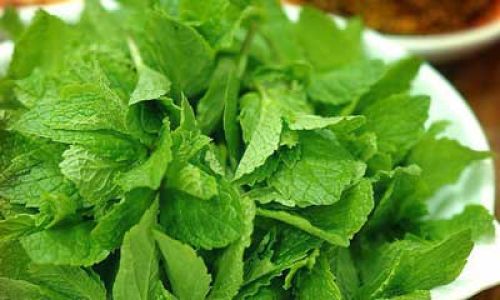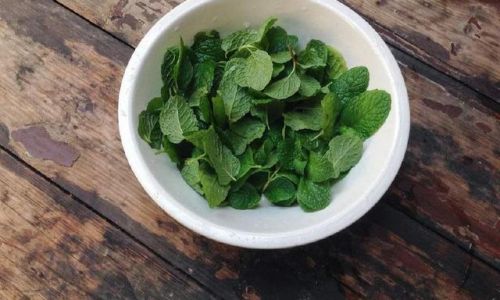Table of content
- Fresh Salads and Slaws
- Herbaceous Sauces and Dips
- Marinades for Meat and Tofu
- Stir-Fries and Sautés
- Iced Mint Tea
- Mint-Infused Water
- Mocktails and Cocktails
- Smoothies and Shakes
- Homemade Mint Ice Cream
- Chocolate-Mint Brownies
- Minty Fruit Salads
- Mint-Infused Syrups
- Digestive Aid
- Natural Breath Freshener
- Headache Relief
- Stress Reduction
Mint, a vibrant and aromatic herb, has been cherished for centuries across cultures for its refreshing taste and myriad health benefits. From ancient civilizations to modern kitchens, this versatile plant has found its way into teas, salads, desserts, and even medicinal remedies. While many are familiar with mint’s role in garnishing dishes or flavoring beverages, its potential as a culinary star extends far beyond these basic uses. This article explores the numerous ways to enjoy mint, ensuring you maximize its flavor, nutritional value, and culinary versatility.

The Basics of Mint: Types and Nutritional Profile
Before diving into recipes, it’s essential to understand the different varieties of mint and their unique characteristics. The most common types include peppermint (Mentha × piperita), spearmint (Mentha spicata), and apple mint (Mentha suaveolens). Peppermint boasts a strong, cooling flavor due to its high menthol content, making it ideal for teas and desserts. Spearmint, with its milder sweetness, is perfect for savory dishes like salads and sauces. Apple mint, as the name suggests, has a fruity undertone that pairs well with fruits and cocktails.
Nutritionally, mint is a powerhouse of vitamins and antioxidants. It is rich in vitamin A, which supports eye health, and vitamin C, which strengthens the immune system. Additionally, mint contains rosmarinic acid, a compound known for its anti-inflammatory and antioxidant properties. Regular consumption of mint may aid digestion, alleviate headaches, and even freshen breath naturally.
Culinary Uses: Elevating Savory Dishes with Mint
Mint’s ability to brighten flavors makes it an invaluable addition to savory recipes. Here’s how to incorporate it into your meals:
Fresh Salads and Slaws
Mint adds a burst of freshness to leafy greens and crunchy vegetables. Toss chopped mint leaves into a Greek salad with feta cheese, cucumbers, and olives. For an Asian-inspired twist, combine mint with shredded cabbage, carrots, and cilantro in a tangy lime dressing. The herb’s cooling effect balances spicy or acidic ingredients, creating a harmonious dish.
Herbaceous Sauces and Dips
Mint-based sauces, such as chimichurri or yogurt dips, elevate grilled meats and roasted vegetables. Blend fresh mint with garlic, olive oil, and red wine vinegar for a zesty chimichurri. Alternatively, mix mint into Greek yogurt with cucumber and lemon juice for a creamy raita that complements spicy curries.
Marinades for Meat and Tofu
Mint’s aromatic oils tenderize proteins while infusing them with flavor. Create a marinade by combining mint, cilantro, ginger, garlic, and lime juice. Let chicken, lamb, or tofu marinate for at least 30 minutes before grilling or baking. The result is a juicy, fragrant dish that wows the palate.
Stir-Fries and Sautés
Add mint leaves toward the end of cooking stir-fries to retain their vibrant color and flavor. Pair mint with garlic, soy sauce, and vegetables like bell peppers and snap peas for a quick, healthy meal. The herb’s crispness contrasts beautifully with the caramelized edges of stir-fried ingredients.

Beverages: From Teas to Cocktails
Mint’s refreshing qualities make it a star in both hot and cold beverages. Here’s how to brew, blend, and shake your way to minty perfection:
Iced Mint Tea
Brew a potent mint tea by steeping fresh or dried leaves in hot water for 5–7 minutes. Strain and chill, then serve over ice with a squeeze of lemon and a drizzle of honey. For a Moroccan-inspired twist, add a pinch of green tea leaves and fresh orange blossom water.
Mint-Infused Water
Elevate plain water by muddling mint leaves with cucumber slices, berries, or citrus wedges. Let the mixture infuse in a pitcher for at least an hour before serving. This hydrating drink is perfect for hot summer days or as a post-workout refresher.
Mocktails and Cocktails
Mint is the backbone of classic cocktails like the Mojito and Mint Julep. For a non-alcoholic option, muddle mint with lime juice and simple syrup, then top with sparkling water and a splash of cranberry juice. For a boozy version, add white rum and a splash of soda water. Garnish with a sprig of mint for an elegant touch.
Smoothies and Shakes
Blend mint leaves with spinach, pineapple, and coconut water for a green smoothie packed with nutrients. For a decadent treat, mix mint into a chocolate-avocado shake. The combination of mint’s coolness and chocolate’s richness is irresistible.
Desserts: Sweet Treats with a Minty Twist
Mint’s natural sweetness and cooling effect make it a delightful addition to desserts. Here are some creative ways to use it:
Homemade Mint Ice Cream
Infuse a custard base with fresh mint leaves by simmering them in cream for 20 minutes. Strain, chill, and churn the mixture in an ice cream maker. Serve with dark chocolate shavings or crushed candy canes for a festive touch.

Chocolate-Mint Brownies
Add a layer of mint ganache to your favorite brownie recipe. Melt dark chocolate with heavy cream and mint extract, then pour over warm brownies. Let cool before slicing into decadent squares.
Minty Fruit Salads
Toss fresh berries, melon, or citrus segments with a honey-mint dressing. Finely chop mint leaves and mix with honey, lime zest, and a pinch of salt. Drizzle over the fruit for a light, refreshing dessert.
Mint-Infused Syrups
Boil equal parts sugar and water with a handful of mint leaves to create a versatile syrup. Use it to sweeten iced tea, drizzle over pancakes, or brush onto cake layers for added moisture and flavor.
Health Benefits: More Than Just a Flavor Booster
Beyond its culinary uses, mint offers a range of health benefits that make it worth incorporating into your daily diet:
Digestive Aid
Mint has long been used to soothe indigestion and bloating. The herb relaxes the muscles of the gastrointestinal tract, easing symptoms of irritable bowel syndrome (IBS). Sipping mint tea after a heavy meal can aid digestion and reduce discomfort.
Natural Breath Freshener
Mint’s antibacterial properties help combat bad breath by killing odor-causing bacteria in the mouth. Chew on fresh mint leaves or suck on mint-flavored candies for an instant refresher.
Headache Relief
The cooling sensation of mint can alleviate tension headaches. Apply a diluted mint essential oil to your temples or inhale mint steam by placing your face over a bowl of hot water with a few drops of oil.

Stress Reduction
The aroma of mint is known to reduce anxiety and improve mental clarity. Diffuse mint essential oil in your home or office, or add a few leaves to your bathwater for a calming soak.
Growing Mint at Home: A Beginner’s Guide
If you’re inspired to use mint regularly, consider growing it in your garden or kitchen. Mint is a hardy herb that thrives in containers, as its aggressive roots can overtake garden beds. Plant mint in well-draining soil, provide partial sunlight, and water regularly. Harvest leaves by pinching stems just above a set of leaves to encourage bushier growth.
Preserving Mint: Making the Most of Your Harvest
To enjoy mint year-round, try these preservation methods:
- Freezing: Chop mint leaves and freeze them in ice cube trays with water or olive oil.
- Drying: Hang mint bundles upside down in a cool, dark place until brittle, then store in airtight containers.
- Infusing Oils: Submerge mint leaves in olive oil and let sit for two weeks before straining.
Conclusion: Embracing Mint’s Versatility
Mint is far more than a garnish—it’s a dynamic herb that can transform ordinary dishes into extraordinary meals. Whether you’re blending it into a smoothie, simmering it in a sauce, or sipping it in a steaming cup of tea, mint offers endless opportunities to explore flavor and boost your health. By experimenting with different varieties and preparation methods, you’ll discover new ways to savor this timeless herb. So, the next time you spot a sprig of mint at the market, don’t hesitate to bring it home—your taste buds (and your body) will thank you.






0 comments